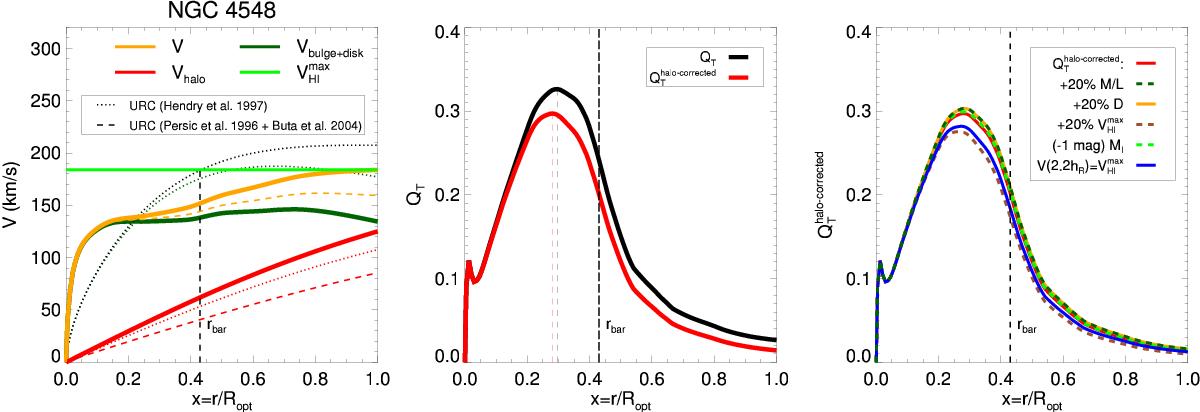Fig. 7

Ad hoc RC model for the barred galaxy NGC 4548 and the effect of the dark matter halo on the force profile. Left panel: solid curves indicate the RC model based on the stellar component of the rotation curve, inferred from the 3.6 μm photometry. The amplitude of the URC halo component (isothermal sphere) has been corrected so that the total rotation curve matches the H i maximum velocity at the optical radius (Ropt = 3.2 hR). The dotted line displays the URC model (exponential disk + isothermal sphere), while the dashed lines correspond to the models used in B2004. Central panel: QT profiles, with and without halo correction. Right panel: halo-corrected QT profiles resulting from a measurement error in input parameters. A 20% overestimate on the input parameters is assumed (in the mass-to-light ratio, the distance to the galaxy, and the observed velocity amplitude). We also assess the impact of reducing by one mag the I-band total luminosity (affecting the core radius in the URC models). The effect of matching the observed maximum velocity at 2.2hR instead of at 3.2 hR is tested as well.
Current usage metrics show cumulative count of Article Views (full-text article views including HTML views, PDF and ePub downloads, according to the available data) and Abstracts Views on Vision4Press platform.
Data correspond to usage on the plateform after 2015. The current usage metrics is available 48-96 hours after online publication and is updated daily on week days.
Initial download of the metrics may take a while.


